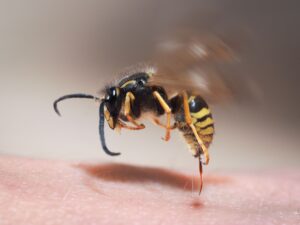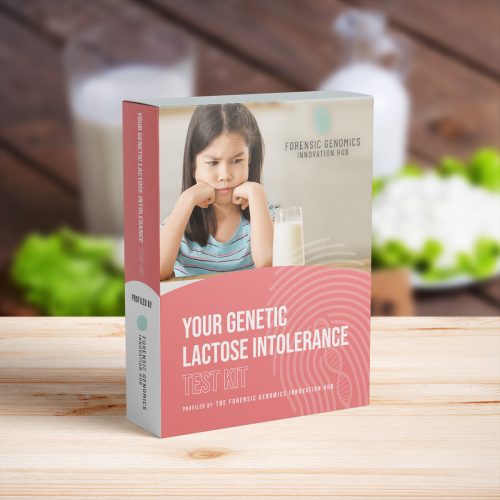An allergy is when your body visibly reacts to something that is normally harmless, such as the fur of a family pet, pollen in the air or the dust you find in your house. This is referred to as an allergic reaction. These reactions are often mild, but in some cases they can be harmful. And in extreme cases, an allergic reaction can even be fatal! Such life-threatening situations are called ‘anaphylaxis ‘.
It is important to distinguish between intolerance and allergic reactions. An intolerance is NOT the same as an allergic reaction. There is a lot written about people being intolerant to certain foods, e.g. lactose (a sugar found in milk). These people cannot metabolize lactose properly due to a lack of the enzyme lactase. The lactose therefore stays in the bowel and eventually causes cramps and diarrhoea. The physical symptoms of allergic reactions and intolerance are caused by the action of two different types of antibodies, also called immunoglobulins . True allergies are caused by an Immunoglobulin E (IgE) response, while food intolerances are caused by an Immunoglobulin G (IgG) response to something. For more information on the difference between allergies and intolerances see here. https://www.vnutritionandwellness.com/food-allergies-sensitivities/
Allergy tests like Allergy Solution measure the levels of IgE in your blood to see if they are raised above the normal range, thus indicating an allergic reaction to an allergen or specific molecular components.
Nearly half of all adults in the UK suffer with at least one form of allergy, and this percentage is rising. Allergies among children is also on the rise, with the incidence of allergic rhinitis (‘hay fever’) and eczema trebling since the 1970s/1980s.
Living with allergies is often not easy, as they can adversely affect your quality of life, usually due to troublesome symptoms. True allergy, involving IgE, can be systemic or local in nature and presentation. An example of a systemic allergic reaction would be the multiple symptoms that are involved with a severe peanut allergy or perhaps in a bee sting allergy. Systems of the body involved could be respiratory, skin, gastrointestinal, and cardiovascular. Symptoms might include wheezing, hives, cramps, and low blood pressure. These reactions can be fatal.
People who are affected by outdoor allergens (e.g. pollens) might find staying indoors avoids allergic symptoms, whereas others who are susceptible to indoor allergens (e.g indoor pets or house dust mites) will find the home a challenging environment. Having school-going children, eating out and travelling all represent particular challenges to the person with allergies. Food allergies are when the body has an unusual reaction to a specific food. In the case of children who have an allergy, most will have experienced eczema at some stage as an infant. Many foods have the potential to cause an allergic reaction, but these are regarded as the top 14 foods:
Celery, gluten-containing cereals, crustaceans, eggs, fish, milk, lupin, molluscs, tree nuts, peanuts, sesame seeds, soya and sulphur dioxide (also known as ‘sulphites’).
Pollen Food Allergy Syndrome (PFAS), also known as oral allergy syndrome, is caused by cross-reacting allergens found in both pollen and raw fruits, vegetables, or some tree nuts. The immune system recognizes the pollen and similar proteins in the food and directs an allergic response to it. The body essentially acts as if you are eating the pollen! It is probably the most common form of food allergy, perhaps accounting for as much as 50% to 60% of all “true allergy” caused by food.
Diagnosis can be a stressful process, especially for children where excessive blood tests are required for multiple single plex tests looking at specific molecular components of an allergen. Newer comprehensive tests like Allergy Solution are more supportive in the diagnosis of Pollen-Food Allergy Syndrome in that they identify multiple molecular components of allergens from a single finger prick. This enables the Allergy Specialist to better understand your individual responses to all these specific molecular components. By identifying the individual’s specific IgE concentrations the severity of the symptoms and individual risk for anaphylaxis might be estimated. This information can then be used for more personalized dietary recommendations and limit the need for a wider food avoidance, which represent a major problem for patients currently, in order to avoid their symptoms. How can it do that?
PFAS symptoms are usually local and typically include itching and tingling of the mouth, throat, and lips. The mouth and throat have a contact induced bumpiness. Stomach acid however will destroy the raw food allergens so the symptoms usually stop when you swallow the food. A PFAS allergy rarely progresses to a systemic reaction. Cooking the food will also destroy some specific molecular components of the allergen so canned and cooked fruits or vegetables rarely cause symptoms. So, while raw apples are often are associated with PFAS, apple pie and applesauce almost never cause symptoms.
The post-Covid era combined with an overburdened NHS have cultivated an environment where direct-to-consumer allergy testing is becoming increasingly common for people wanting to find out more about their allergies and get answers quicker.
Want to read more?
https://www.nhs.uk/conditions/allergies/
https://www.nhs.uk/conditions/lactose-intolerance
https://www.webmd.com/a-to-z-guides/immunoglobulin-test
https://www.allergyuk.org/about-allergy/statistics-and-figures/
https://www.allergyuk.org/living-with-an-allergy/
https://www.allergyuk.org/types-of-allergies/food-allergy/
https://www.vnutritionandwellness.com/food-allergies-sensitivities/












